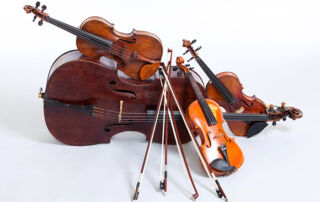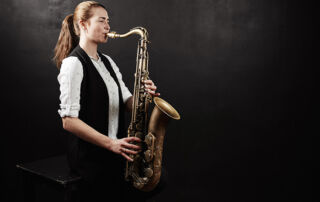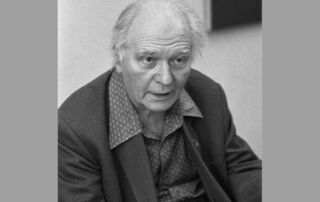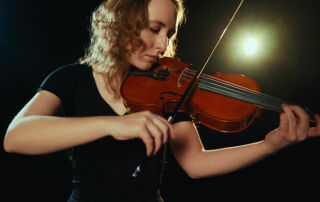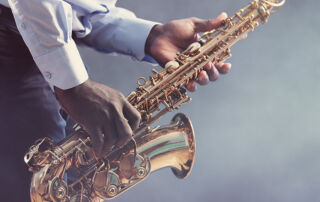Born on 10 December 1908 in Avignon, France, Messiaen became a major composer of 20th-century music.
He was the son of Pierre Messiaen, a literature professor who translated the complete works of Shakespeare, and his mother, Cécile Sauvage, who, in addition to being a poet, was a scholar of Greek rhythm.
In this way, he grew up in a literary family environment, which nurtured his artistic development and would later be reflected in the richness of his musical language.
Messiaen acknowledged the influence of his family environment on his artistic development.
In an interview with Claude Samuel published in 1986, he said, "(...) In the meantime, my mother had poetic intuitions."
That is why she said, without knowing that I would become a composer, ‘I sense an unfamiliar, distant music’ (…).
And yet, (…) ‘All of the East is here singing within me – with its blue birds, with its butterflies’ (…).
How could she have known that I would become an ornithologist and that Japan would fascinate me? (…)
I am convinced that I owe my career to that musical anticipation. It was my mother who showed me, even before I was born, the path to nature and art.
She expressed it in poetic terms; as a composer, I later translated them into music” (Messiaen. In: Samuel & Messiaen 1994: 15, Moreira, 2008).
His work reveals a deep religious faith and a strong knowledge of ornithology, to the point that he was even called the St. Francis of contemporary music. He used to say that his favourite composers were the birds.
His religiosity emerged during catechism classes while he was in Grenoble between 1914 and 1918, a period when his father, Pierre Messiaen, was fighting in the First World War alongside other male members of the family.
During this period, Messiaen lived in his uncle André Sauvage’s apartment. Later in adulthood, he recalled often playing piano scores he received as Christmas gifts: Don Giovanni and The Magic Flute by Mozart, Alceste and Orpheus by Gluck, Siegfried by Wagner, Estampes by Debussy, and Gaspard de la nuit by Ravel, as well as others he purchased himself.
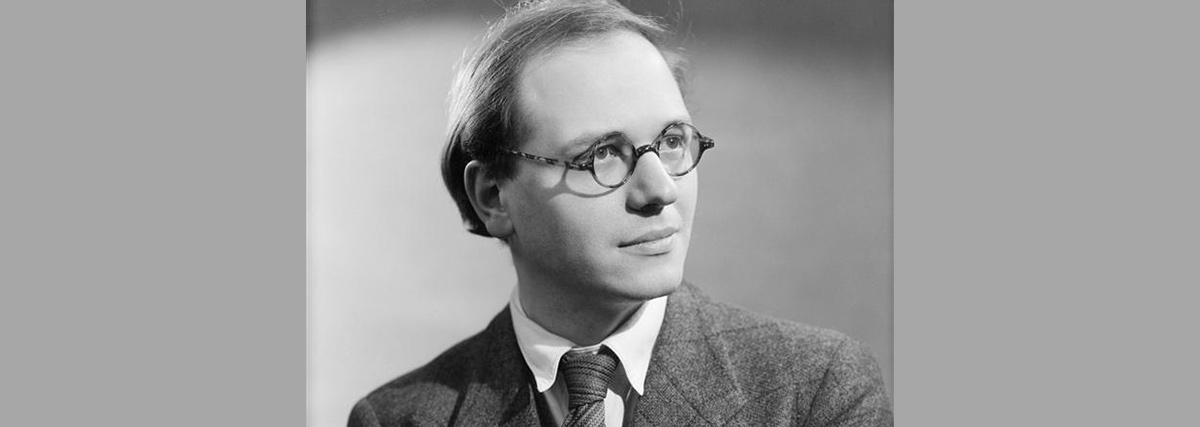
Professional Journey and Stylistic Development
At the age of 22, he was appointed organist at the Church of La Trinité in Paris, where he worked until his death.
This experience with the majestic sound of the organ would influence the sonority of his piano compositions on many occasions.
In addition to being a great composer, Messiaen was an outstanding organist and became well known for his organ improvisations.
Selon Francisco Javier Costa Ciscar (2004), Messiaen’s style underwent considerable renewal throughout his career, but the changes did not occur gradually; rather, they were abrupt, making it relatively easy to distinguish the transition from one period to another. However, this did not mean abandoning the distinctive features he had already developed, but rather adding new material to his musical language.
According to his stylistic characteristics, Serge Gut divides Olivier Messiaen’s work into four distinct periods, organised according to the addition of new compositional materials.
Messiaen’s style in the first period is characterised by a strong influence from his composition teacher. Paul Dukas and above all Claude Debussy which stems from the use of rich, chromatic harmony with modal 7th and 9th progressions, while at the same time introducing a set of writing techniques that Messiaen later explained in his treatise Technique de mon langage musical (The Technique of My Musical Language).
Among the most notable compositions from this period are: – 1928: Le Banquet Céleste (organ) – 1929: Préludes (piano) – 1930: Offrandes oubliées – 1936: Poèmes pour Mi (soprano and piano) – 1943: Visions de l’Amen (two pianos) – 1944: Trois Liturgies de la Présence Divine (women’s choir, piano, ondes Martenot¹, and orchestra) – 1944: Vingt Regards sur l’Enfant-Jésus (piano) – 1945: Harawi – Song of Love and Death (voice and piano).
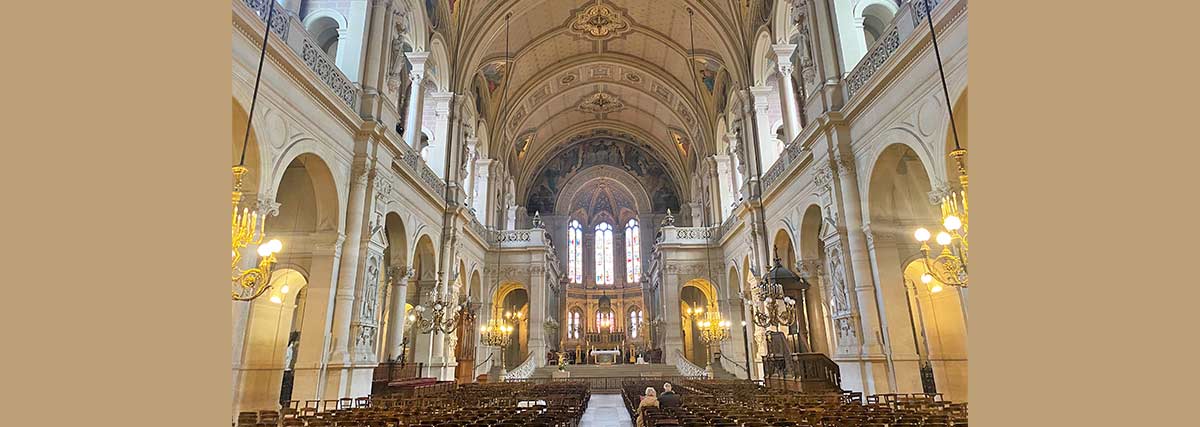
Influence of Birds, Religion, and Final Synthesis
Under the influence of Boulez and the Darmstadt School, Messiaen strongly directed his compositional technique towards serial structures from 1948 onwards. Many critics consider the years 1948 to 1952 as a significant transitional period in his work.
The main works of this second period include: 1948: Canteyodjaya (piano), 1949–1950: Quatre Études de rythme, 1950: Messe de la Pentecôte (organ), 1951: Livre d’orgue.
From 1952 onwards, a new phase began, often referred to as the “ornithological period.” Messiaen had been fascinated by birdsong from a young age, and his desire to incorporate it into his music led him to study ornithology. During this period, Messiaen dedicated his works to birdsong, while also exploring his fascination with rhythm. Key compositions include: 1952: Le Merle Noir (flute and piano) 1953: Réveil des oiseaux (orchestra) 1955: Oiseaux exotiques (orchestra) 1956–1958: Catalogue d’oiseaux (two pianos) 1960: Chronochromie (orchestra) 1963: Sept Haïkaï (piano, xylophone, marimba, and small orchestra) In a biographical note on Olivier Messiaen, José Abreu (2009) discusses the features of his final period, describing it as a return to religious themes and a synthesis of all the elements that had defined his work over the years.
The most famous compositions from this period are: 1964: Couleurs de la Cité Céleste (orchestra) 1965: Et Expecto Resurrectionem Mortuorum (wind orchestra) 1965–1969: La Transfiguration de Notre Seigneur Jésus-Christ (mixed choir, seven instrumental soloists, and large orchestra) 1969: Méditations sur le Mystère de la Sainte Trinité (organ).
The development of his musical language is extremely fascinating.
Having developed a modal language with rich, dense chords—marked by certain intervals that became recognisable to the ear as distinctly his own—Messiaen joined the experimental currents of the musical avant-garde in the late 1940s.
It was in fact Messiaen who opened the door to total serialism and pointed the way forward for an entire new generation of composers, including Pierre Boulez and Karlheinz Stockhausen.
However, Messiaen quickly distanced himself from his most radical explorations and turned to elements of nature as the source of inspiration for his creative process.
This gave rise to several works that reproduce birdsong. As early as the 1960s, the composer sought to create a stylistic synthesis of his own legacy and produced works of deep religious devotion and grand scale, such as the renowned oratorio La Transfiguration, commissioned by the Gulbenkian Foundation, and the opera Saint François d’Assise.
As part of the Casa da Música’s programme, his work was the subject of a retrospective in celebration of the centenary of his birth in 2008.

